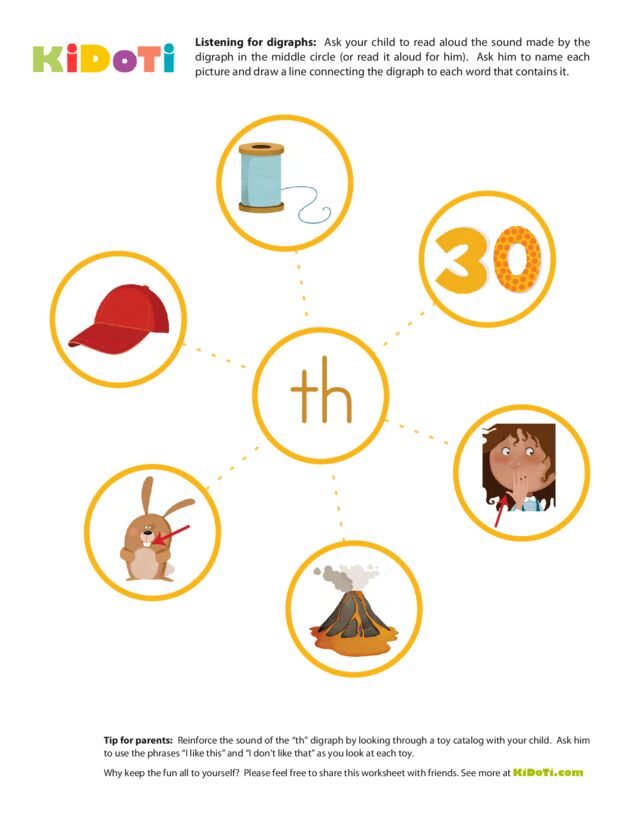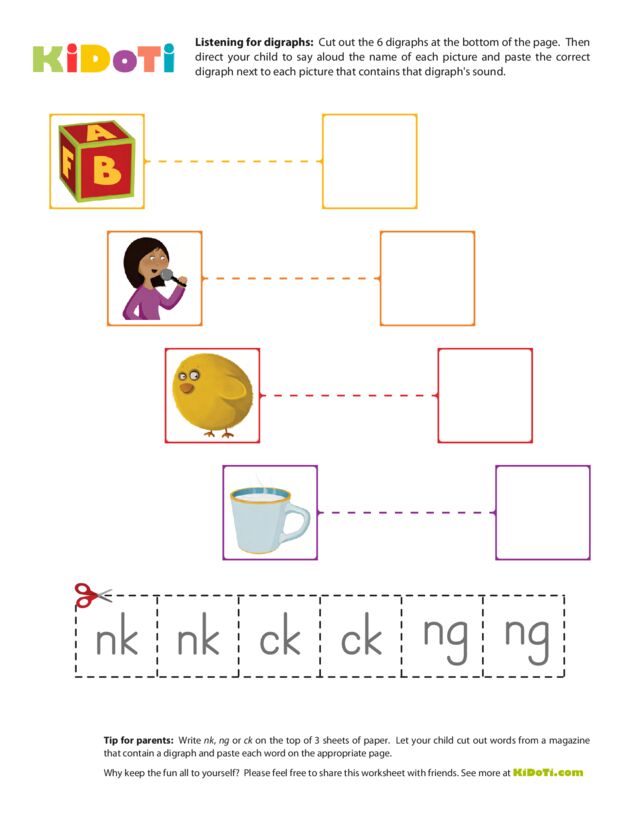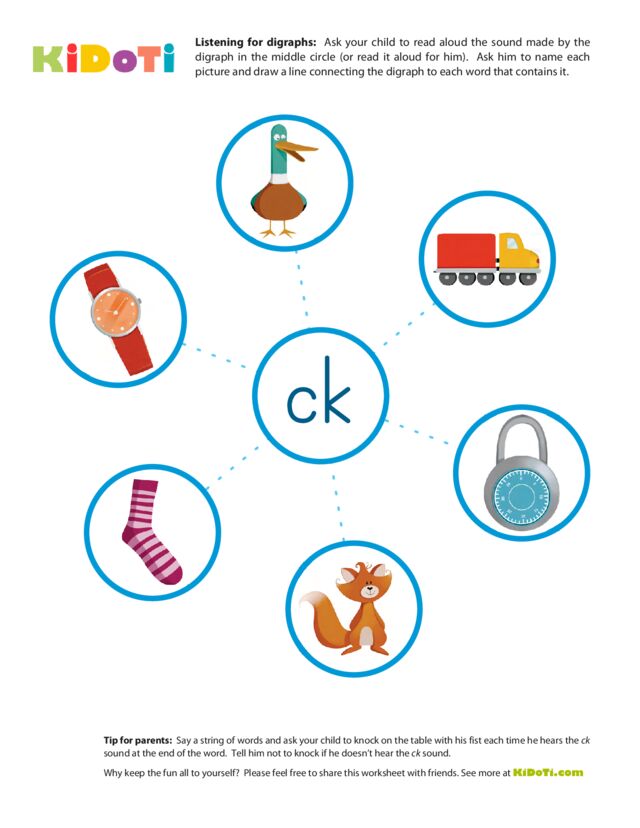Digraphs is a phonics term that refers to two or more letters that make a single sound. As children learn to read, they must learn to recognize common digraphs (although they do not need to be familiar with the actual term “digraph”) so they can quickly apply the correct sound to the group of letters and not perpetually attempt to sound the letters out. The following worksheets are designed to introduce children to common digraphs. The beginning set of worksheets features the three most common digraphs children will encounter when reading, and the intermediate and advanced sets of worksheets (to be added soon) will feature some of the most complex digraphs children will encounter.
What is a digraph?
A digraph is a pair of letters that makes one sound. Consonant digraphs are just what their name implies – two consonants that make one sound. Often seen consonant digraphs include sh, ch, th, wh, kn, ck, nk, ng, and mb. As children encounter more advanced vocabulary in their reading material, it is helpful to know these digraphs. Some, such as ck, can be sounded out correctly. But others involve an entirely new sound (such as sh) and still others contain a silent letter (kn). So learning to spot these digraphs and know their sounds can enhance reading (and writing) comfort.
Why I like digraph worksheets
Digraph worksheets are ideal for isolating a consonant pair and giving children practice hearing that new sound. These worksheets also show children the letters that create that sound. When children have the chance to practice with new sounds and letter combinations on a worksheet page, they can learn, have fun and most importantly, gain confidence with new skills.
Tips for using these digraph worksheets
To begin, point to the letters that comprise the digraph on the worksheet, say the letter names and then and say the digraph sound clearly. Ask your child to repeat the digraph sound. Tell him that these letters are special because together they make just one sound. Ask your child to follow your example and name the letters and then say the correct sound.
Next, look at the pictures on the worksheet. For all of these digraph worksheets, it is necessary to name the picture correctly for your child to be successful. On the sh page, for example, the tennis shoe must be called a “shoe,” not a “sneaker,” for your child to be able to make the correct match. Let your child know the correct names of the pictures on the worksheet pages and ask him to point to each picture as he repeats its name.
Some children may quickly and comfortably hear the digraph sound in the beginning position in words and they can go ahead and make the line to connect the picture to the digraph. However, if your child is struggling just a bit, it may be helpful to direct him to say the digraph sound first before saying each picture word. This may help him to isolate, hear, and then recognize the digraph sound.
Additional activities to supplement these digraph worksheets
- To focus on the ch sound, say a string of words and ask your child to say “ch” and point to his chin for each word he hears that begins with that digraph.
- For practice hearing the sh digraph sound, say a string of words and ask your child to say “sh” and put his finger over his mouth as if he is asking you to be quiet.
- You can continue this game with the th sound by suggesting that your child point to his head as if he was thinking and say “th” each time he hears that digraph sound.
- Read to your child some tongue twisters or nursery rhymes that highlight a digraph sound. Some suggestions are: “She sells sea shells by the seashore” or Three Blind Mice.
- Make a list with your child of names of relatives and friends. Ask your child to use a marker to circle any digraph letter pairs that he spots. You may wish to write the letter pairs at the top of the list for your child to refer to as he searches.






